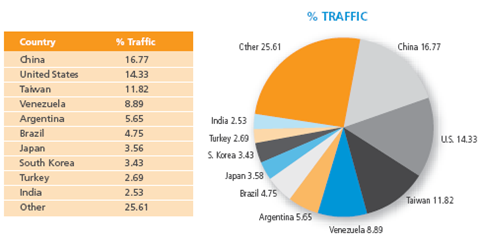State of the Internet: Old worms live on; Delaware speediest state; South Korea a broadband king

Akamai on Thursday released its first State of the Internet report and found attack traffic--viruses, worms, bots and such--derived from 125 countries with 30 percent of that traffic coming from the United States and China. Some of these attacks, which occurred in the first quarter, were from worms like Blaster back in 2003.
Of that attack traffic, the top 10 countries accounted for 75 percent of the attacks. The surprising hotspots for attacks included Venezuela, Argentina and Brazil--three places not exactly known for their hacking communities. Russia was a no-show.
Here's the chart from Akamai's report, which requires registration:
And the most popular port of attack was Port 135, which got nearly 30 percent of the attacks in the first quarter. This port is used for remote procedure calls on Microsoft operating systems and was used by the Blaster worm way back in 2003.
Akamai explains:
One interesting observation about the ports that see the highest levels of attack traffic is that they were targeted by worms, viruses, and bots that spread across the Internet several years ago. While that's not to say that there are not any current pieces of malware that attack these ports, it may point to a large pool of Microsoft Windows-based systems that are insufficiently maintained, and remain unpatched years after these attacks "peaked" and were initially mitigated with updated software.
Among other notable findings:
- South Korea had the highest levels of high broadband connectivity (more than 5 Mbps) in the world followed by Japan, Hong Kong and Sweden. See chart at right.
- In the U.S., Delaware had the highest connectivity with more than 60 percent of connections to Akamai topping 5 Mbps. For what it's worth, Delaware is my home state and it's nice to see the little place be known for something more than tax free shopping. Of course, I still look at cashiers like they are smoking crack when I have to pay a sales tax but I digress. Rhode Island was second with 42 percent of connections topping 5 Mbps. Call it the small, but speedy rule.
- Washington state was the slowest of the bunch and Akamai didn't have any reasons for the speed decline. Perhaps Microsoft and Amazon are taking all the bandwidth.
- In the first quarter, 323 million unique IP addresses connected via Akamai.
- Among the slowest countries Rwanda had the most connections below 256 Kbps.
